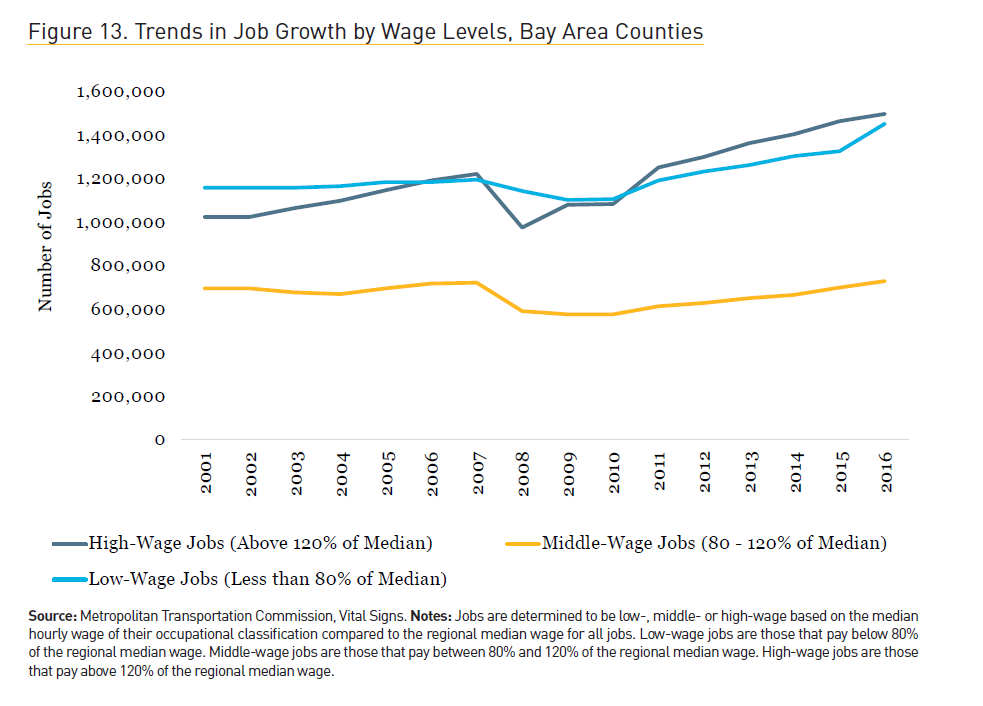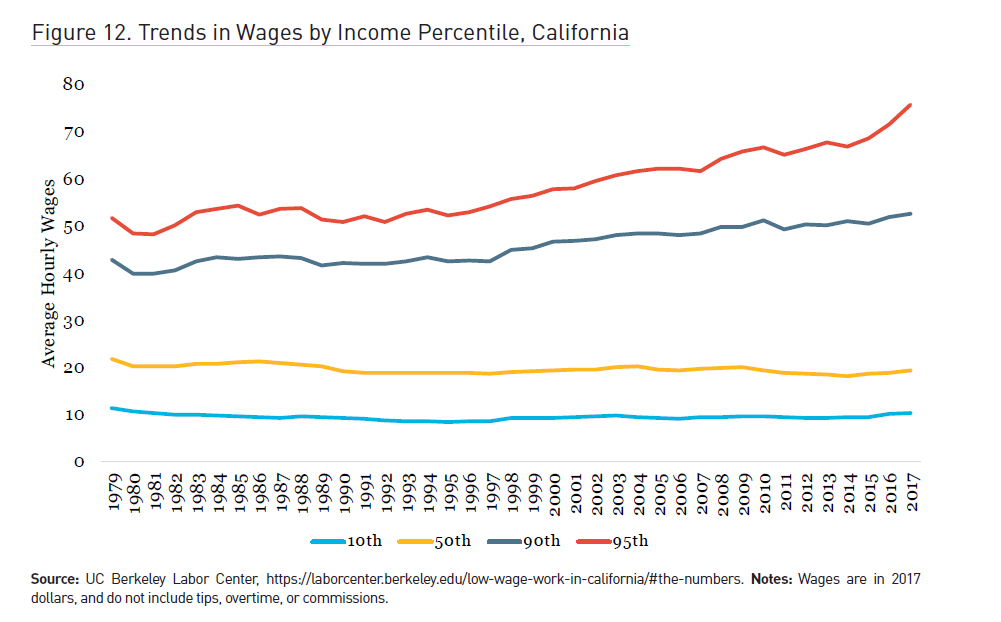Housing Affordability is About More Than Housing Costs
By Ned Resnikoff on December 2, 2021
Discussions about housing unaffordability in the Bay Area often focus most of their attention on the region’s extremely high housing costs. There is of course good reason for this: the state’s housing costs are, as previously mentioned, extremely high. But an analysis of housing unaffordability that focuses solely on the cost of housing without considering prospective residents’ ability to pay is naturally incomplete. The problem in the Bay is not simply that the rent is too damn high; incomes for a large swath of the region’s population are also too damn low.
That’s what makes the latest report from UC Berkeley’s Terner Center for Housing Innovation such a valuable contribution to the local housing discourse. Called “On the Edge of Homelessness: The Vulnerability of Extremely Low-Income Households in the Bay Area,” it considers both sides of the Bay Area’s housing unaffordability equation: the region’s suborbital housing costs and its incredibly lopsided income distribution.
I recommend reading the full report, which was prepared for All Home. For the purpose of this post, I’m going to focus on its analysis of the income distribution, because it is not something I’ve discussed much in previous posts. In particular, I want to draw your attention to the following chart, which shows trends in regional job growth since 2001:

Obviously, the Bay Area has added a lot of jobs since the first dot-com boom. But few of those jobs were for middle-class workers. Instead, most of the job growth has been in either high-wage occupations (such as tech industry knowledge worker jobs) or very low-wage jobs (such as service and maintenance work). Meanwhile, as the following chart from the Terner Center report shows, wages have stagnated over the past 40 years for all but those who were already the highest earners.

In other words, the middle class has been shrinking, and the economy has become increasingly bifurcated between a handful of wealthy elites and a large pool of extremely low-wage labor. This is the story of America since the 1970s, with the economy of the Bay Area serving as a particularly stark microcosm of broader trends.
The result is that extremely low-income Bay Area residents are getting squeezed from both ends, with their wages being held down even as regional housing costs have inflated precipitously. People in the housing policy world understandably tend to focus mostly on the latter issue. But anything we can realistically do to lower the cost of housing will likely fail to make a major dent in homelessness without a commensurate effort to boost incomes for our poorest neighbors.
Read the full Terner Center report here.
December 6: This post was updated to note that the Terner Center report was commissioned by All Home.